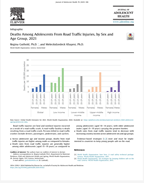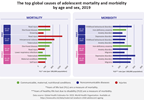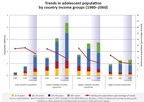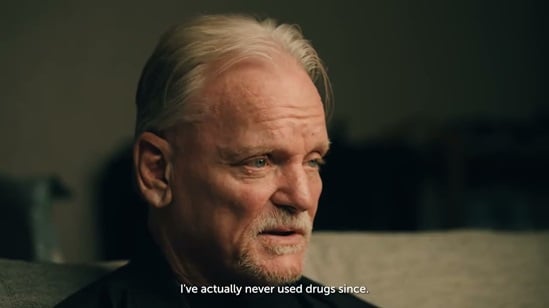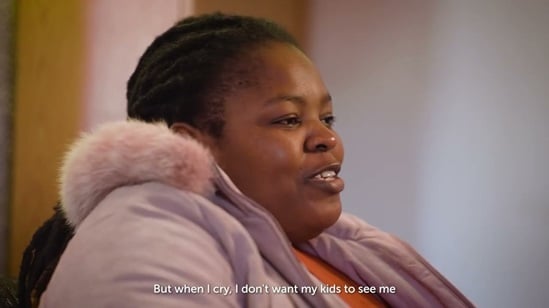
Promoting adolescent well-being
Overview
Adolescence is a time of rapid physical, cognitive, social and emotional development, and the experiences of those aged 10-19 years have profound impacts on their well-being both in the shorter and the longer term. Although well-being is a broad concept with different interpretations, WHO and the Partnership for Maternal, Newborn & Child Health (PMNCH), in collaboration with the United Nations H6+ Technical Working Group on Adolescent Health and Well-Being, have developed the Adolescent Well-being Framework. The AWF defines well-being as “Adolescents have the support, confidence, and resources to thrive in contexts of secure and healthy relationships, realizing their full potential and rights” and covers five interrelated domains.

Adolescents need support from the individuals and institutions around them to promote their immediate well-being and their longer-term positive development. At the family level, parents and other care takers have a critical role to play in creating a safe and nurturing environment for growth and development. At the community level, individuals in regular contact with adolescents can help to identify warning signs such as anxiety, sadness, and substance use and facilitate access to counselling and health services. Schools can build skills and confidence and can also play a key role in ensuring that adolescents receive health and life skills education, including comprehensive sexuality education, and in encouraging physical activity and good nutrition. At the societal level, well-designed laws, policies and well-resourced programmes can create opportunities for education and employment and ensure safety and security in public places for a supportive local environment. Finally, addressing harmful and unequal gender norms and relationships and other types of discrimination is fundamental to well-being.




